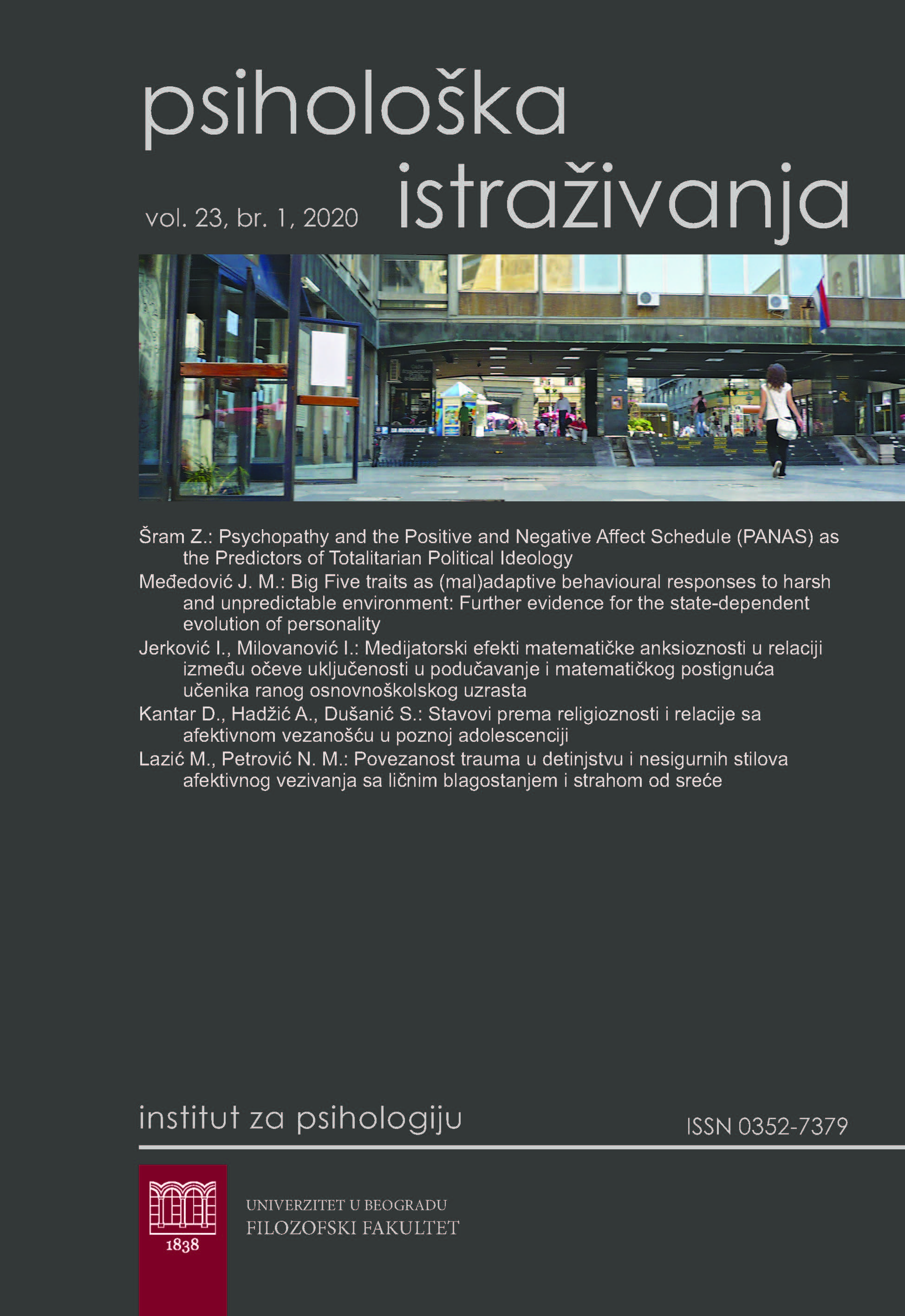Big Five traits as (mal)adaptive behavioural
responses to harsh and unpredictable
environment: Further evidence for the statedependent
evolution of personality
Big Five traits as (mal)adaptive behavioural
responses to harsh and unpredictable
environment: Further evidence for the statedependent
evolution of personality
Author(s): Janko MeđedovićSubject(s): Psychology
Published by: Филозофски факултет, Универзитет у Београду
Keywords: state-dependent behaviour; Big Five personality traits; environment; fitness; human behavioural ecology
Summary/Abstract: State-dependent behaviour models of personality predict that fitness consequences of personality depend on various states. Hence, personality traits may be adaptive only in certain conditions. In the present research, we tested the state-dependentpersonality model of Big Five personality traits using harsh and unpredictableenvironments as the extrinsic states. The data were collected on a communitysample (N=221). We extracted the fitness factor from a broader set of indicatorsrelated to reproduction and mating. It consisted of higher reproductive success,the longest romantic relationship duration, and earlier age of first reproduction.The only personality trait which significantly predicted fitness was low Opennessto experience. However, three interactions between environmental conditionsand personality in the prediction of fitness were detected: Low Agreeableness andExtraversion decreased fitness in highly unstable environments; low Opennesselevated fitness, especially in harsh environments. The data are in accordance withthe previous findings regarding the relations between personality and evolutionaryfitness. Furthermore, current findings suggest that state-dependent models ofpersonality are not only valid explanations of evolutionary forces which maintainpersonality variation, but that they are quite robust as well, since they can bedetected in a relatively small sample of reproductively active individuals.
Journal: Psihološka istraživanja
- Issue Year: 23/2020
- Issue No: 1
- Page Range: 23-41
- Page Count: 19
- Language: English

